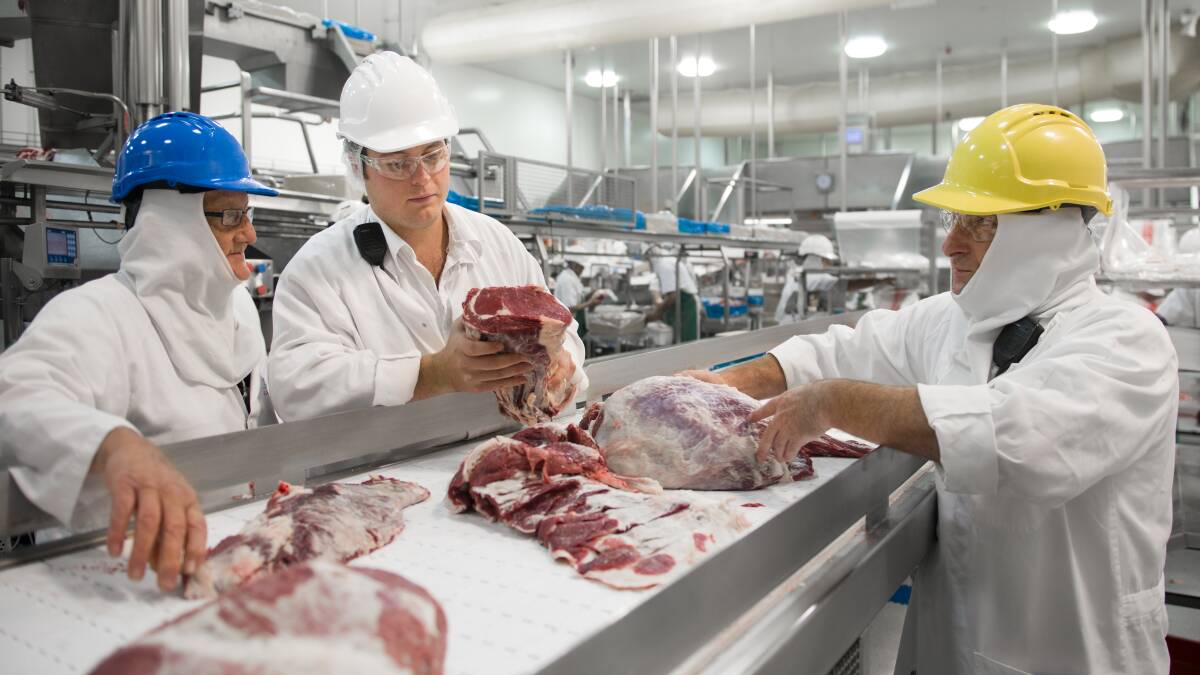
THE mountain of challenges that have pounded Australia's meat processing sector this year are showing up in the latest beef export figures, with total shipments sinking close to the bottom of all-time February lows.
Subscribe now for unlimited access to all our agricultural news
across the nation
or signup to continue reading
The Omicron wave which kept big numbers of meatworkers at home in January, followed by devastating floods in the processing epicenter of Queensland and northern NSW have exacerbated the severe cattle shortage to see just 59,512 tonnes shipping weight exported for February.
That is more than 25 per cent under the five-year average at a time when global demand for beef, and the prices that overseas customers are willing to pay, is very strong.
All four of Australia's top customers took significantly less that they typically would in February. Thomas Elders Markets reported China has now edged out South Korea to reclaim the second top destination for market share for the current season, but it holds that spot by less than 1pc.
Japan still sits at number one, holding 26.4 per cent of the total beef export flows from Australia since the start of 2022.
The ongoing effect of the floods, which have halted processing at some plants for a week now, will be felt even more in March figures and are expected to mean key forecasts for overall volumes for this financial year will have to be ammended.
The Australian Bureau of Agricultural and Resource Economics and Sciences had only just released its projections when the floods began to wreck havoc. They said beef exports would increase 11pc this financial year and hold at that higher level - $9.1 billion worth - for the next financial year.
The overall theme of those projections - that increasing beef production will result in greater export volumes with falling cattle prices to make Australian beef more competitive - still holds true, analysts say, but the immediate disasters have set things back somewhat.
ABARES livestock analyst Jonathan Wong is expecting world beef prices to remain strong through until 2026/27.
He said increases in global beef demand would be greater than supply, which would mean upward pressure on prices.
ALSO SEE:
Big agribusiness lender Rabobank says the ongoing strength in consumer demand, combined with constrained supply, was keeping those global prices high but there were headwinds starting to build.
In Rabobank's latest Global Beef Quarterly, senior analyst Angus Gidley-Baird lists labour, freight, feed and energy costs among the largest of the input cost increases that were now flowing into the supply chain.
That would test the willingness of consumers to continue to pay top dollar for beef, he said.
Rabobank data shows in quarter four 2021, beef retail prices in the United States were 23pc cent higher than the five-year average and in China, they were 24pc up.
Much of that increase was pandemic-related - lockdowns pushing up at-home beef consumption, additional disposable incomes from stimulus packages and limitations on the availability of alternative proteins.
Mr Gidley-Baird said in many cases, the increases in retail beef prices had been among the largest in history.
But with a number of the cost increases likely to be permanent, they will need to be 'accommodated' and passed on into retail pricing, Mr Gidley-Baird said.
How much more consumers will pay for beef remains the great unknown. Certainly the degree to which they have been absorbed so far has surprised analysts and industry stalwarts but many are now saying there are signs of genuine pushback.
For all the big news in beef, sign up below to receive our Red Meat newsletter.


